Panpo Port (판포포구)
0m 0 2023-02-16
2877-3, Panpo-ri, Jeju-si, Jeju-do
+82-64-740-6000
Panpo Port, located on the west side of Jeju, is a popular snorkeling spot. Thanks to its sand bed and clear water, it offers a mystical underwater scenery. Visitors who do not have snorkeling equipment can rent one from the Panpo-ri Youth Association during the summer season. There are shower facilities as well so there is no need to bring anything else. In addition to snorkeling gears, visitors can also rent paddle boats, life vests and, even a low wooden bench on which visitors sit and relax for enjoying the view of the port. Unlike a typical beach, it is a port so swimmers can be free from sandy mess and the water is relatively shallow, which makes it a perfect place for children to play safely and pleasantly in the water.
Sinchang Windmill Coastal Road (신창풍차해안도로)
3.3 Km 1 2023-02-16
1322-1, Sinchang-ri, Jeju-si, Jeju-do
+82-64-740-6000
Sinchang Windmill Coastal Road, which continues along the western tip of Jeju Island, presents a view of windmills lined up along the road from an offshore wind farm. The view of white windmills and emerald-colored sea along the winding coastline offer a pleasant fall scenery. There are many other things that unfold before one's eyes as while looking out upon the blue sea, like Chagwido Island afar. The road is well-known for its beautiful sunset so it is a great place to take pictures and watch the setting sun. Along the coastal road is a trail named Eco Experience. It features a Kelp grouper statue, Wondam Experience Site and a rest area where visitors can take selfies with many different backdrops. The observatory located in the middle of the trail is relatively quiet and visitors are recommended to head towards the observatory after taking a few photos on their walk up from Sinchang Windmill Coastal Road.
Geumneung Beach (금능해수욕장)
4.2 Km 34175 2023-02-16
Geumneung-gil, Jeju-si, Jeju-do
+82-64-728-3983
Clear waters, a beautiful beach with white sand and seashells, fantastic sunset, and the view of Biyangdo Island beyond sum up to describe Geumneung Beach. The white sandy beach where the bottom of the shallow, blue water is clearly seen creates an illusion that one can easily walk all the way to Biyangdo. With clear, shallow waters and amenities like the shower booth, Geumneung Beach is a family-friendly vacation destination.
Geumneung Beach is directly connected to Hyeopjae Beach, another popular tourist spot on the west side of Jeju Island. However, despite the common charming elements the two beaches share, Geumneung Beach sees a relatively small number of visitors than its neighbor, so it exudes a more relaxing vibe. Moreover, the beach and the parking lot are directly connected, making it more convenient to move baggage and other belongings. The newly built showers supply warm water, which is another advantge of the beach.
It is recommended to visit the beach during the hours of ebb tide. Once the sea water recedes afar, a vast, beautiful sandy beach appears. The water is shallow in many parts where natural swimming pools are formed, allowing little children to be able to play safely.
Hyeopjaegul Lava Tube (Hallim Park) (협재굴(한림공원))
4.3 Km 18648 2021-06-09
300, Hallim-ro, Jeju-si, Jeju-do
+82-64-796-0001
Hyeopjaegul Lava Tube is one example of the lava tube systems of Jeju Island, along with Hwanggeumgul, Socheongul, Ssangyonggul and Manjanggul Lava Tubes. The cave is approximately 200 meters in length, 10 meters in x_width and 5 meters in x_height. It is thought to have been created by the lava that erupted from Hallasan Mountain some 25 million years ago. This cave uniquely contains features of both lava and limestone caves. The entire area surrounding the cave is a huge stratum of seashells and sand, while the interior of the cave has a mystical ambience due to its various formations such as stalactites and stalagmites, hanging from the ceiling and sprouting up from the bottom of the cave. The cave also features pillars formed when stalactites and stalagmites join together. The cave walls are covered in lime, which at times looks like beautiful cave paintings. The temperature inside the cave stays at 17~18℃ throughout the year, making the cave a welcome escape from the summer heat and a great place to keep warm during winter.
Hyeopjaegul Lava Tube has been designated Natural Monument No. 236 and ranks among the world’s major mysterious caves, such as the stone salt cave of Peru and the underwater limestone caves of Yugoslavia. As Hyeopjaegul Lava Tube is close to Ssangyonggul Lava Tube, the two can be visited on the same day.
Stone Grandfather Restaurant (돌하르방)
4.5 Km 15431 2020-05-29
300, Hallim-ro, Jeju-si, Jeju-do
+82-64-796-0001
Located in Jaeam Folk Village (Hallim Park), the restaurant is spacious and is well known for its traditional local dishes such as charcoal-grilled Jeju pork, seafood and mung bean pancake, nutritious sea urchin soup, and jopssalju (Jeju-style wine made of millet and yeast). It also serves cold herb naengmyeon in the summer and pheasant buckwheat kalguksu (knife-cut noodles) and a local dish called pheasant bingtteok in winter.
Ssangyonggul Cave (Hallim Park) (쌍용굴 (한림공원))
4.5 Km 23189 2022-09-13
300, Hallim-ro, Jeju-si, Jeju-do
+82-64-796-0001
Ssangyonggul Cave, a designated Natural Monument, is one of the representative lava tubes of Jeju Island along with Hwanggeumgul, Socheongul, and Manjanggul caves. The cave measures approximately 400 meters in length, 6 meters in x_width, and 3 meters in x_height. It is thought to have been created by lava that erupted from Hallasan Mountain some 25 million years ago.
One of the unique features of this particular cave is that it has features of both a lava tube and a limestone cave. The entire area surrounding the cave is a huge stratum of seashells and sand, while the interior is a mystical mix of stalactites and stalagmites. Lime covers the cave walls in a series of natural swirls and streaks, bringing to mind the strokes of an abstract painting. Since the cave stays at a constant 17-18℃ throughout the year, it’s a welcome escape from the heat in the summer and a great place to warm up in the winter.
The cave gets its name from its two branches, which are said to look like the paths of two dragons (‘Ssangyong’ meaning ‘two dragons’ in Korean). It is thought that Ssangyonggul Cave and Hyeopjaegul Cave were once one cave since the second entrance of Ssangyonggul Cave is so close to the end of Hyeopjaegul Cave.
Hallim Park (한림공원)
4.5 Km 100735 2023-03-13
300, Hallim-ro, Jeju-si, Jeju-do
+82-64-796-0001
Hallim Park is one of the most popular tourist spots on Jeju Island, located approximately 33 kilometers west of Jeju-si and Hallasan Mountain along the beach in Hallim-eup. It faces the pleasant scenery of Biyangdo Island, Hyeopjae Beach, and Geumneung Beach. The park was established in early 1971 on barren land with the importation of tons of earth and the planting of assorted subtropical plants.
Hallim Park, reaching almost 100 thousand square meters, has a variety of gardens that can be enjoyed in any season. Visitors can enjoy Palm Tree Road, Jeju Stone and Bonsai Garden, Water Garden, Subtropical Botanic Garden, and much more. The most famous tourist sites in Hallim Park are Hyeopjaegul and Ssangyonggul Caves, known to be the only two-dimensional caves in the world. In addition, a folk village, children's amusement park, and outdoor resort facilities make it enjoyable for both children and adults.
Hyeopjae Beach (협재해수욕장)
4.7 Km 126452 2024-04-02
329-10 Hallim-ro, Hallim-eup, Jeju-si, Jeju-do
Hyeopjae Beach, encircled by lush pine forests, seamlessly extends into Geumneung Beach. The beach features smooth white sand, shallow waters, and a gentle slope ideal for swimming. Camping is available at Songlim, along with various amenities. The view of the emerald-colored sea and the distant Biyangdo Island offers magnificent scenery, with the sunsets being particularly breathtaking.
Biyangdo Island (비양도)
5.3 Km 30878 2023-01-18
146, Hallimhaean-ro, Jeju-si, Jeju-do
+82-64-796-7522
Meaning “to fly over,” Biyangdo Island is the last-formed volcanic island in Jeju (1002). It remains in its original form as a parasitic volcano and it is located in the center of an uncontaminated area of the sea having abundant fishing grounds with varied fish species. The island has many natural formations, including Biyangbong Peak, featuring six mysterious peaks, two craters, and a rock formed like a mom carrying her baby on her back. The island has many walking paths to view these attractions and more.
Jeoji Oreum (Dakmol Oreum, Sae Oreum) (저지오름(닥몰오름,새오름))
5.8 Km 45976 2020-02-26
Jungsanganseo-ro, Jeju-si, Jeju-do
Jeoji Oreum is situated in Jeoji-ri, Hangyeong-myeon in Jeju-si. This parasitic cone rises 239 meters above sea level, is 100 meters high, and has a crater with a circumference of 800 meters and 62 meters deep. The crater is round and in the shape of a funnel.
It is said that Jeoji Oreum is as old as Jeoji Village. It is also called Dakmoru or Sae Oreum. Nearby, there are Gamaechang Oreum and Heoritdang, showing
just how long the history of Jeoji Village is. In the past, people harvested wild weeds from Jeoji Oreum to cover their thatched-roof houses. Over time, trees were planted and today, Jeoji Oreum is covered with a dense forest. The area has been designated a "Forest of Life" since June 2005.
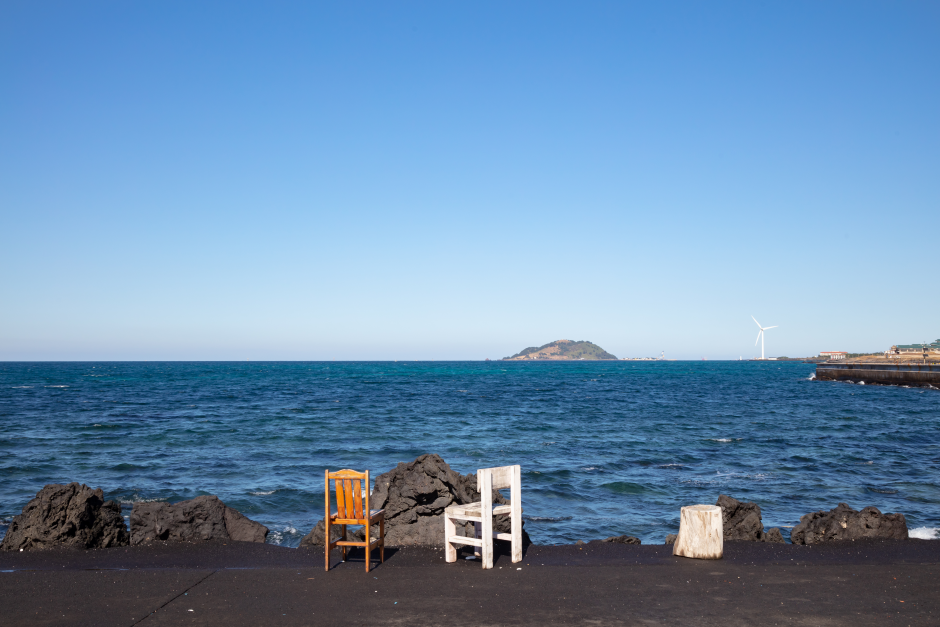
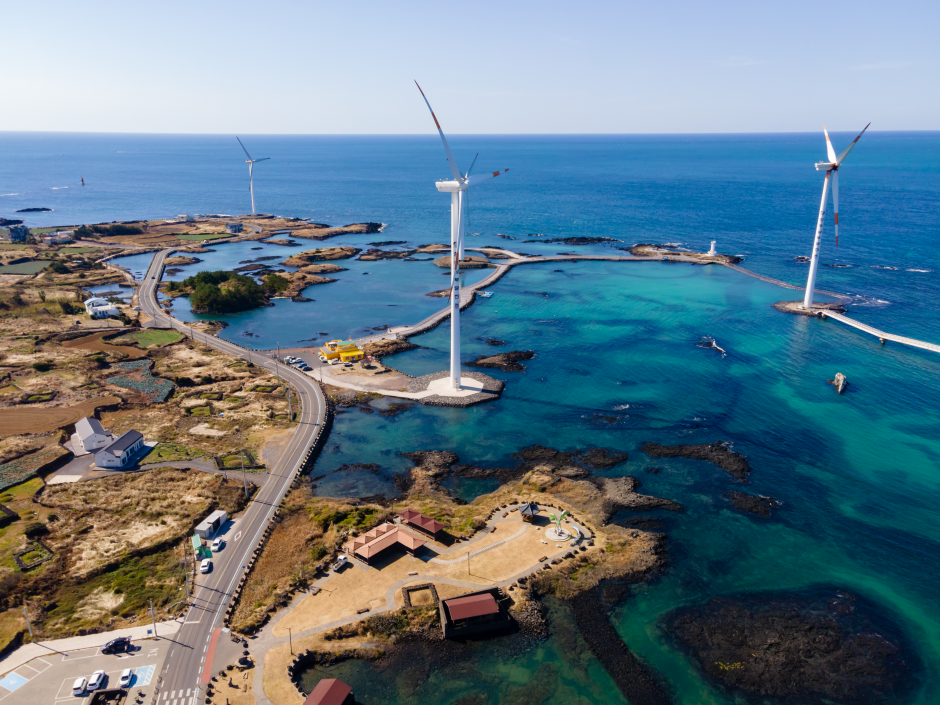
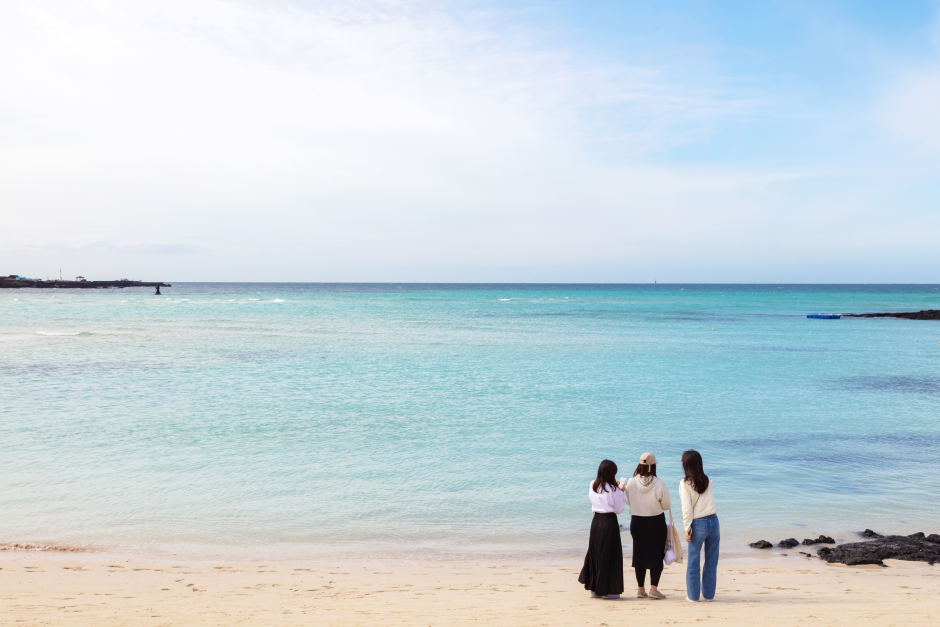

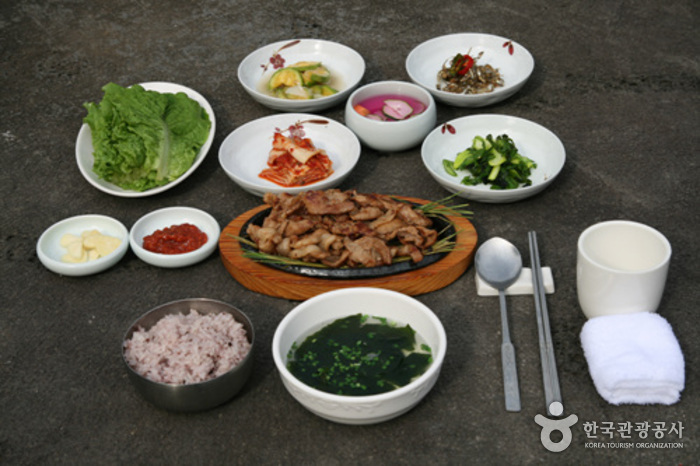
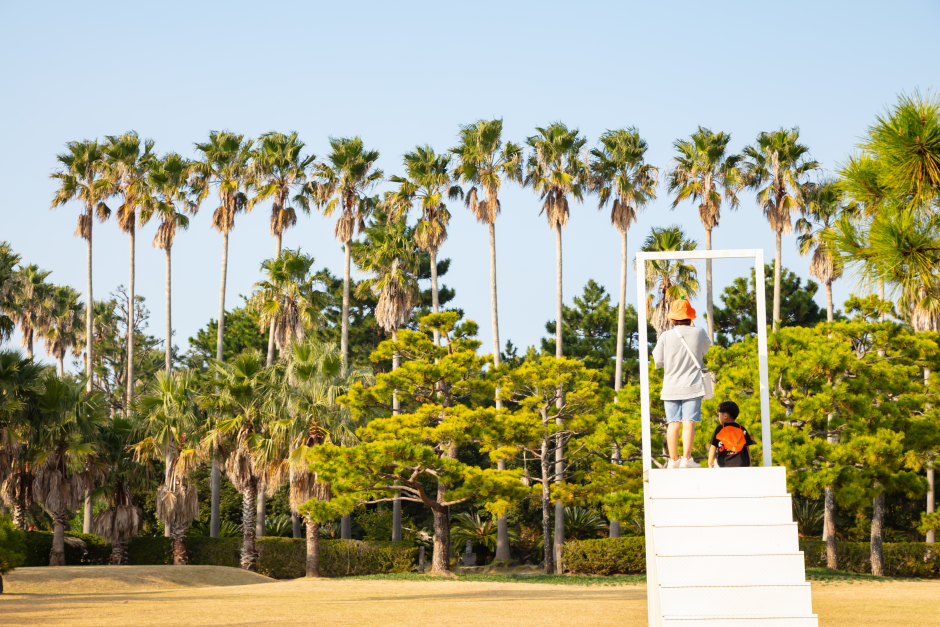
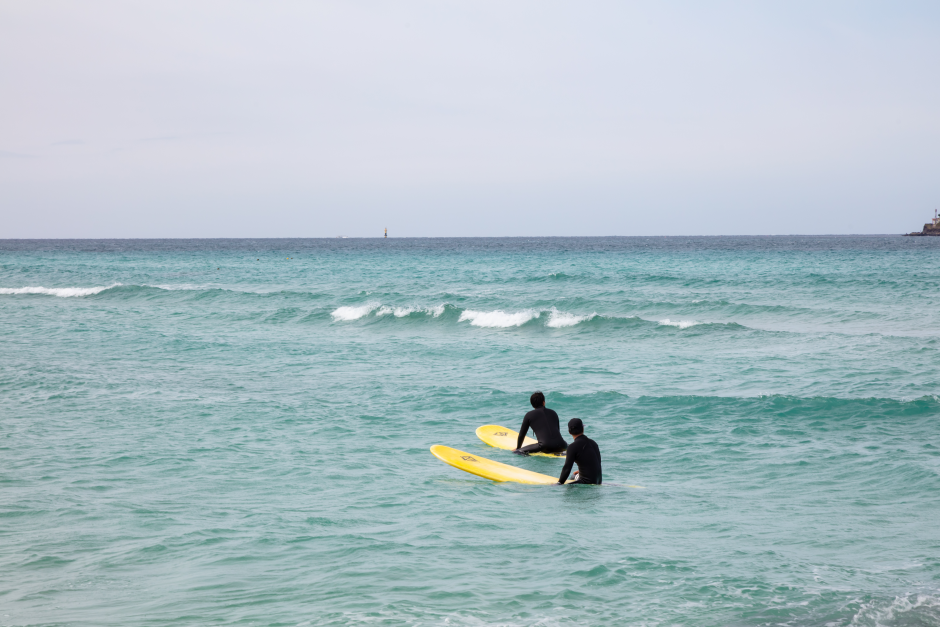
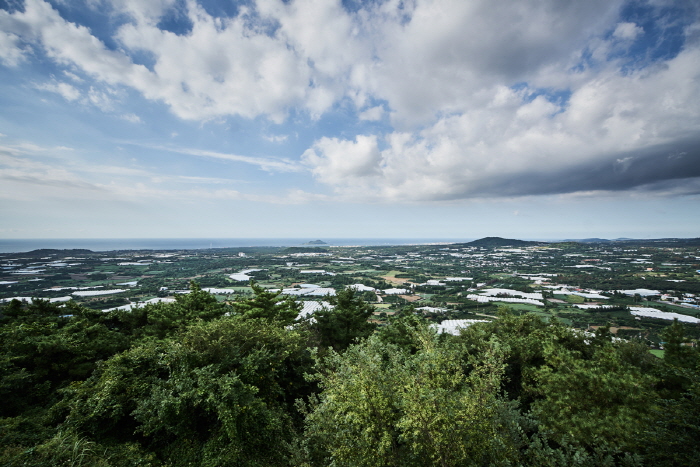
 English
English
 한국어
한국어 日本語
日本語 中文(简体)
中文(简体) Deutsch
Deutsch Français
Français Español
Español Русский
Русский